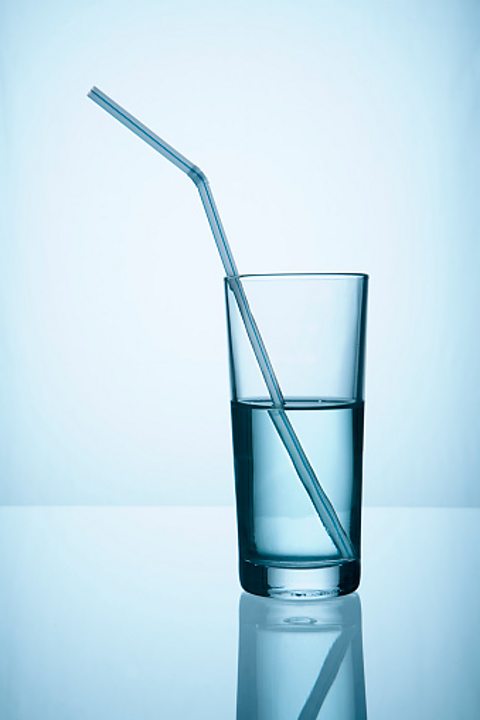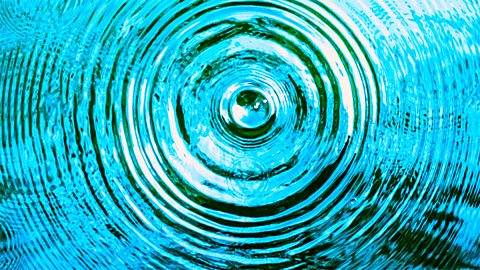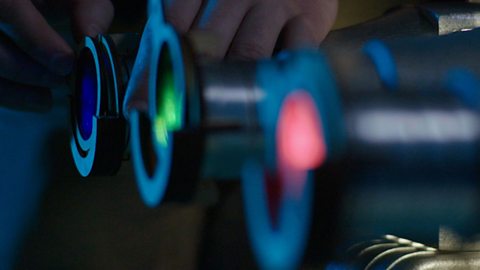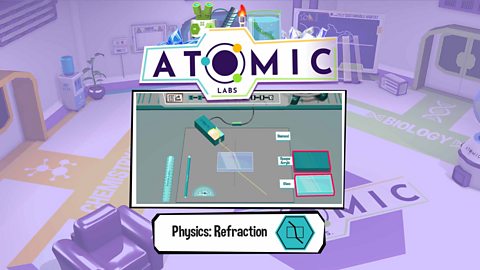Key points
- Light is refracted when it enters a material like water or glass. Depending on the density of the material, light will reduce in speed as it travels through, causing it to change direction.
- Ray diagrams can be used to show the path light takes when it is refracted.
- Lenses are usually made from glass or plastic. They are shaped in a way that refracts light so it focuses at a point.
Game - refraction
Play an Atomic Labs experiment to explore the refraction of light through different materials.
You can also play the full game
Lens activity
Play this game to see how different lenses change the view of a scene.
Refraction
Light waves change speed when they pass across the boundary between two substances with a different densityAll substances are made of particles. Density is a measure of how close together particles are. Closely packed particles have a higher density than particles that are spread out., such as air and glass. This causes them to change direction, an effect called refraction.

At the boundary between two transparent substances:
- the light slows down going into a denser substance, and the ray bends towards the normal
- the light speeds up going into a less dense substance, and the ray bends away from the normalA line at 90° to the reflecting surface, from which all angles are measured - usually represented by a dashed line..
Just like ray diagrams showing reflection, all angles are measured from the normal – a line at 90° to the refracting surface.
It is refraction that makes some objects appear to bend when they are viewed through water, like the straw shown here.

Ray diagrams for refraction
This ray diagramA diagram showing the path light takes. Rays of light are represented using straight lines, with arrowheads to show the direction of travel. shows how light is refracted through a glass block:
The rays of light are represented by straight lines, with arrowheads to show the direction.
The angle the incident rayThe light ray travelling towards the mirror or surface. hits the block is called the angle of incidence, and the angle the refracted rayThe ray travelling away from the boundary between materials. travels is called the angle of refraction.
Understanding refraction
Light travels at approximately 300,000,000 metres per second (m/s) in air or a vacuumEmpty space, where there is no solid, liquid or gas present. but slows down to around 200,000,000 m/s when moving through glass.
If the light hits the surface of a glass block at an angle, this change in speed causes a change of direction. This is because one side of the light ray enters the glass first and slows down while the other side is still in the air, so is moving faster – causing the ray to 'bend' or 'turn' towards the normal.
The reverse happens when the light leaves the glass block, causing it to bend away from the normal.
To understand why this happens, it can be useful to think about the analogy of a car moving from tarmac to mud. The car on the left is travelling straight towards the mud, meaning both wheels hit the mud at the same time, so the car slows down but does not change direction.
The car on the right hits the mud at an angle, so the front right wheel hit the mud first and slows down, causing the car to turn clockwise – towards the normal.
Convex lenses
Light can be focused so that the rays appear to meet at a single point. Focusing light is important for getting clear images in our eye or in photographs, because images that are not focused appear blurred.
A lens is a specially shaped pieces of glass or transparent plastic, that is used to focus light.
A convex lens is made from a transparent material that bulges outwards in the middle on both sides. Light is refracted as it passes into, then out of, the lens.
Use of convex lenses
Convex lenses have a wide range of uses, and are commonly found in:
- magnifying glasses
- spectacles for people with long-sight (who can see distant objects clearly but not nearby ones)
- telescopes
- cameras
Eyes also contain a convex lens that can change shape, so it can produce focused images of objects which are at different distances from the eye.
Test your knowledge
Play the Atomic Labs game! gamePlay the Atomic Labs game!
Try out practical experiments in this KS3 science game.

More on Waves
Find out more by working through a topic
- count6 of 15

- count7 of 15

- count8 of 15

- count9 of 15

